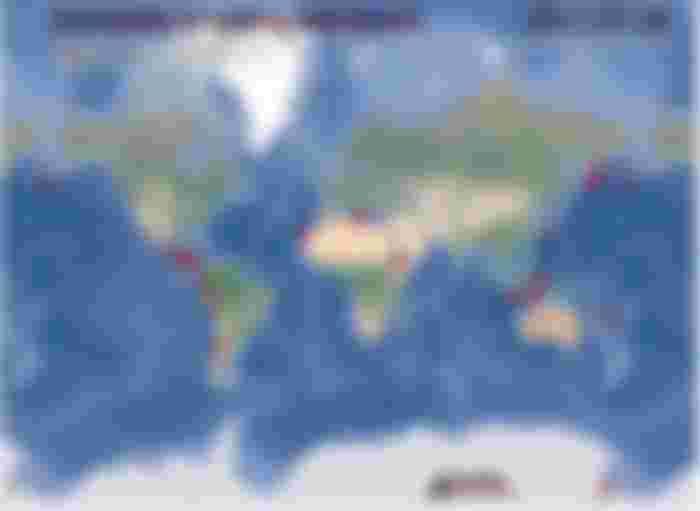Volcanic eruptions, hot ash and glowing lava flows are some of the most spectacular displays of the Earth's natural energy. You may not have personally witnessed such an event, but perhaps you bathed in volcanic hot springs or ate food grown on the fertile soil of volcanic ash. Some even benefit from geothermal heat in their homes.
But recently, many people living near active volcanoes have died and been destroyed by volcanic disasters. Most devastating were the eruptions and landslides that followed Mount Pinatubo in the Philippines, which destroyed tens of thousands of homes, and in Nevado del Ruiz, Colombia, which killed more than 22,000 people.
It is therefore helpful to ask, "Do I live near an active or potentially active volcano?" Which types of rashes are the most dangerous and can be even more deadly than the other types? If I live in a hazardous volcanic area, what can I do to minimize the risk?
Active Volcanoes: Where Are They?
You may be surprised to learn that you live near an inactive volcano and that inevitably you are in danger when it reactivates. Scientists who have studied volcanoes (called volcanologists) for the past few decades have not only been able to identify active and dormant volcanoes, but have also been able to understand why volcanoes occur in certain places.
Take a look at the map below which shows the location of some of the more than 500 active volcanoes. Do you live nearby?



Scientists have determined that these volcanoes occur along the boundaries of large moving plates or crusts, especially where the oceanic plate collides with the continental plate. This process is called subduction. The resulting heat creates magma (molten rock) that rises to the surface. In addition, the sudden movement between the plates causes massive earthquakes in many areas where volcanic eruptions occur.
Volcanoes can also form where the sea plates separate. Many of these eruptions take place under the sea and are not visible to humans. But if you live in Iceland, you're at the top of the Reykjanes Range that connects to the Mid-Atlantic, where the plates of the Americas are different from those of Europe and South America.In some other cases, individual hot spots under the plates of the Earth's crust have spawned large volcanoes in Hawaii and the African continent.
What are the dangers?
The level of risk for a volcano depends on its recent historical activity, including the extent of volcanic eruptions and associated hazards. Risk is a measure of the size and accessibility of a population living in a risk area.
In general, the most dangerous explosive eruptions are caused by silicate magma. This type of magma has a stiff consistency and can temporarily block the volcano until the gases build up enough pressure to open it. Silica-rich magma solidifies to form light rocks and is common in volcanoes along the edge of the plate. Explosions can also occur when liquid magma hits water and turns it into steam. The hot ash produced by explosive eruptions can be fatal: Three volcanoes in the Caribbean and Central America killed more than 36,000 people in six months in 1902.
On the other hand, the ocean's hotspots, flat volcanoes and many others consist mainly of dark basalt, a small amount of silica but rich in iron and magnesium. Basalt magma is liquid and generally causes explosive or non-explosive eruptions, as well as slow lava flows that humans are relatively easy to avoid. But these eruptions can last a long time: the Hawaii Kilauea volcano has been erupting continuously since January 1983. These eruptions cause extensive property damage but rarely personal injury or death.
Some eruptions deposit large amounts of ash on the side of a volcano, which can cause landslides and, when mixed with large amounts of snow, ice or water, can form a thick mud that can quickly dry out valleys. These clays (also known as lahars, from the Indonesian term lava) can spread several kilometers through the volcano, perhaps long after the eruption has ceased.
Other volcanic hazards that can damage or disrupt life include falling volcanic ash and debris, atmospheric shock waves from explosive explosions, toxic gases, acid rain and earthquakes. With dozens of high-risk volcanoes around the world and many potential threats, making a meaningful volcanic risk assessment is really a complex and difficult task.
Can you minimize the risk?
As the world's population grows, more and more people live in potentially dangerous volcanic areas. For that reason, with the latest wave of volcanic activity around the world, volcanologists have intensified their efforts to reduce volcanic risk. In some cases, outbreaks and predictions were successful and a life was saved. What is the basis for these predictions?
Eruptions often occur before earthquakes in the volcano or in the plumbing system below, indicating that magma is moving upwards. When magma builds up on top of a volcano, the pressure increases. Gases are released and the temperature and acidity of the groundwater can increase. Small outbreaks can occur before large ones. All these activities can be monitored.
Long before an eruption, geologists can use the rock to understand what the potential dangers are. The types of volcanic currents and secondary hazards are often repeated or the eruption mimics the eruption of other volcanoes studied. Based on these data, many volcanoes were mapped to show the areas at greatest risk.
Therefore, the assessment and monitoring of volcanic risk by volcanologists as well as the early warning of impending disasters by local authorities are the keys to saving human lives from volcanic risks. Unlike earthquakes, which still cannot be predicted, many volcanic eruptions can be observed closely enough to allow the injured to be evacuated before a devastating event occurs. Leaving the danger zone is essential, as man-made structures often offer little or no protection against volcanic eruptions, explosions and the destructive forces of landslides, avalanches and tsunamis.
While laudable efforts are being made to reduce the congestion and hazards caused by volcanic eruptions, people still cannot predict the eruptions and associated catastrophic activities with complete accuracy to ensure complete safety from the hazards. Some of those who control the volcanoes also died because they got caught in an unexpected eruption. However, if you live near a potentially active volcano, you should heed all warnings from local authorities. By doing this, you will greatly increase your chances of surviving a volcanic disaster.
Image credits https://volcanodiscovery.com

